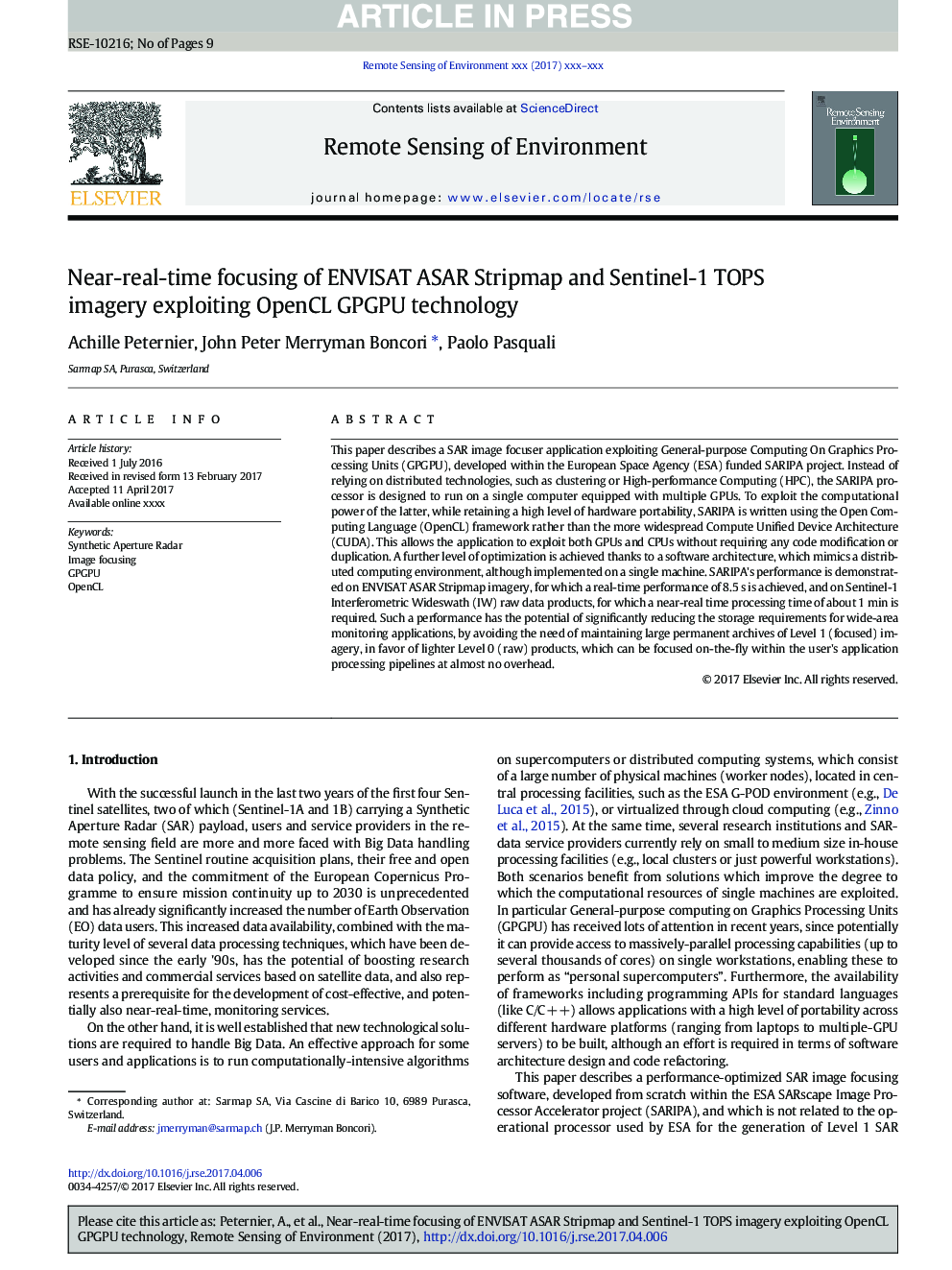| Article ID | Journal | Published Year | Pages | File Type |
|---|---|---|---|---|
| 8866960 | Remote Sensing of Environment | 2017 | 9 Pages |
Abstract
This paper describes a SAR image focuser application exploiting General-purpose Computing On Graphics Processing Units (GPGPU), developed within the European Space Agency (ESA) funded SARIPA project. Instead of relying on distributed technologies, such as clustering or High-performance Computing (HPC), the SARIPA processor is designed to run on a single computer equipped with multiple GPUs. To exploit the computational power of the latter, while retaining a high level of hardware portability, SARIPA is written using the Open Computing Language (OpenCL) framework rather than the more widespread Compute Unified Device Architecture (CUDA). This allows the application to exploit both GPUs and CPUs without requiring any code modification or duplication. A further level of optimization is achieved thanks to a software architecture, which mimics a distributed computing environment, although implemented on a single machine. SARIPA's performance is demonstrated on ENVISAT ASAR Stripmap imagery, for which a real-time performance of 8.5Â s is achieved, and on Sentinel-1 Interferometric Wideswath (IW) raw data products, for which a near-real time processing time of about 1Â min is required. Such a performance has the potential of significantly reducing the storage requirements for wide-area monitoring applications, by avoiding the need of maintaining large permanent archives of Level 1 (focused) imagery, in favor of lighter Level 0 (raw) products, which can be focused on-the-fly within the user's application processing pipelines at almost no overhead.
Keywords
Related Topics
Physical Sciences and Engineering
Earth and Planetary Sciences
Computers in Earth Sciences
Authors
Achille Peternier, John Peter Merryman Boncori, Paolo Pasquali,
